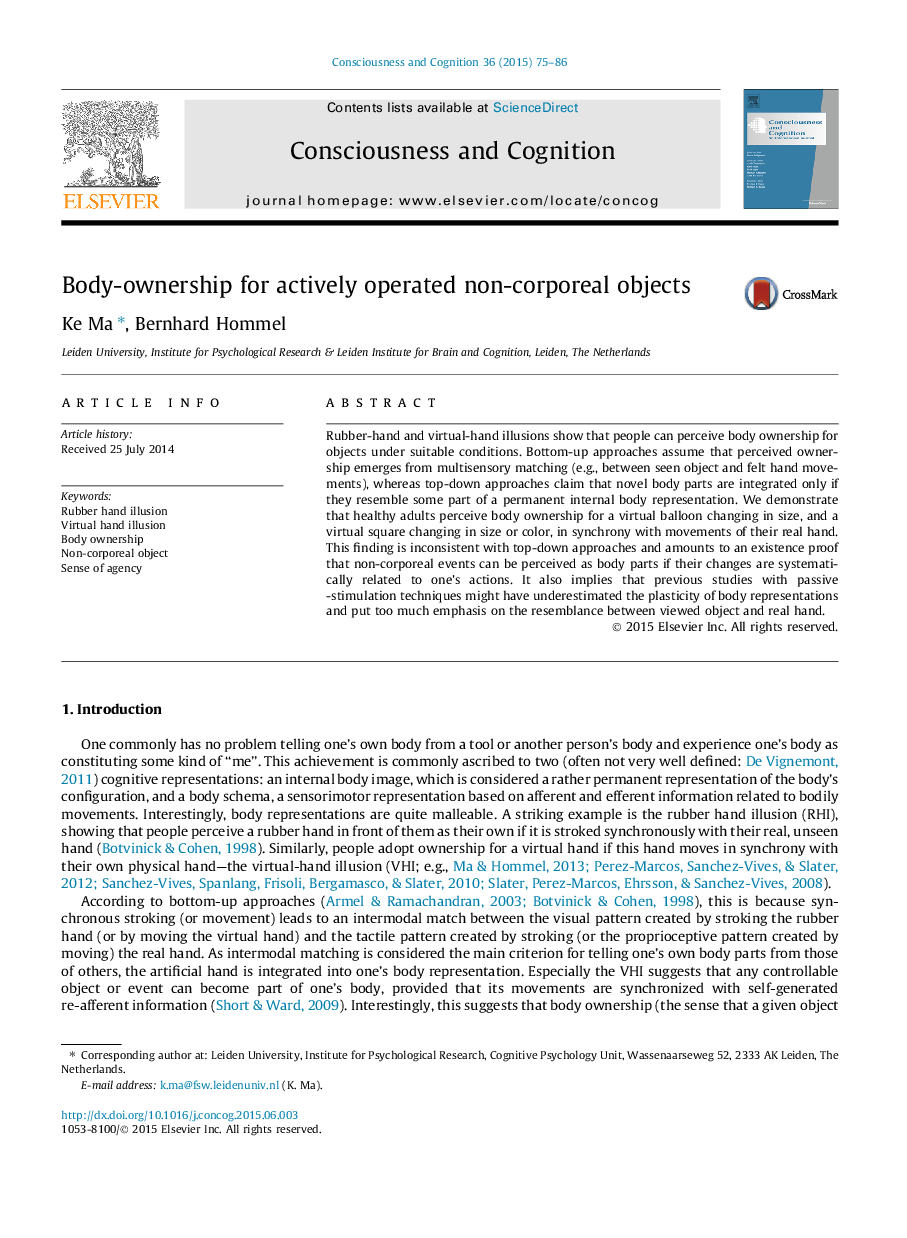| Article ID | Journal | Published Year | Pages | File Type |
|---|---|---|---|---|
| 7289027 | Consciousness and Cognition | 2015 | 12 Pages |
Abstract
Rubber-hand and virtual-hand illusions show that people can perceive body ownership for objects under suitable conditions. Bottom-up approaches assume that perceived ownership emerges from multisensory matching (e.g., between seen object and felt hand movements), whereas top-down approaches claim that novel body parts are integrated only if they resemble some part of a permanent internal body representation. We demonstrate that healthy adults perceive body ownership for a virtual balloon changing in size, and a virtual square changing in size or color, in synchrony with movements of their real hand. This finding is inconsistent with top-down approaches and amounts to an existence proof that non-corporeal events can be perceived as body parts if their changes are systematically related to one's actions. It also implies that previous studies with passive-stimulation techniques might have underestimated the plasticity of body representations and put too much emphasis on the resemblance between viewed object and real hand.
Related Topics
Life Sciences
Neuroscience
Cognitive Neuroscience
Authors
Ke Ma, Bernhard Hommel,
